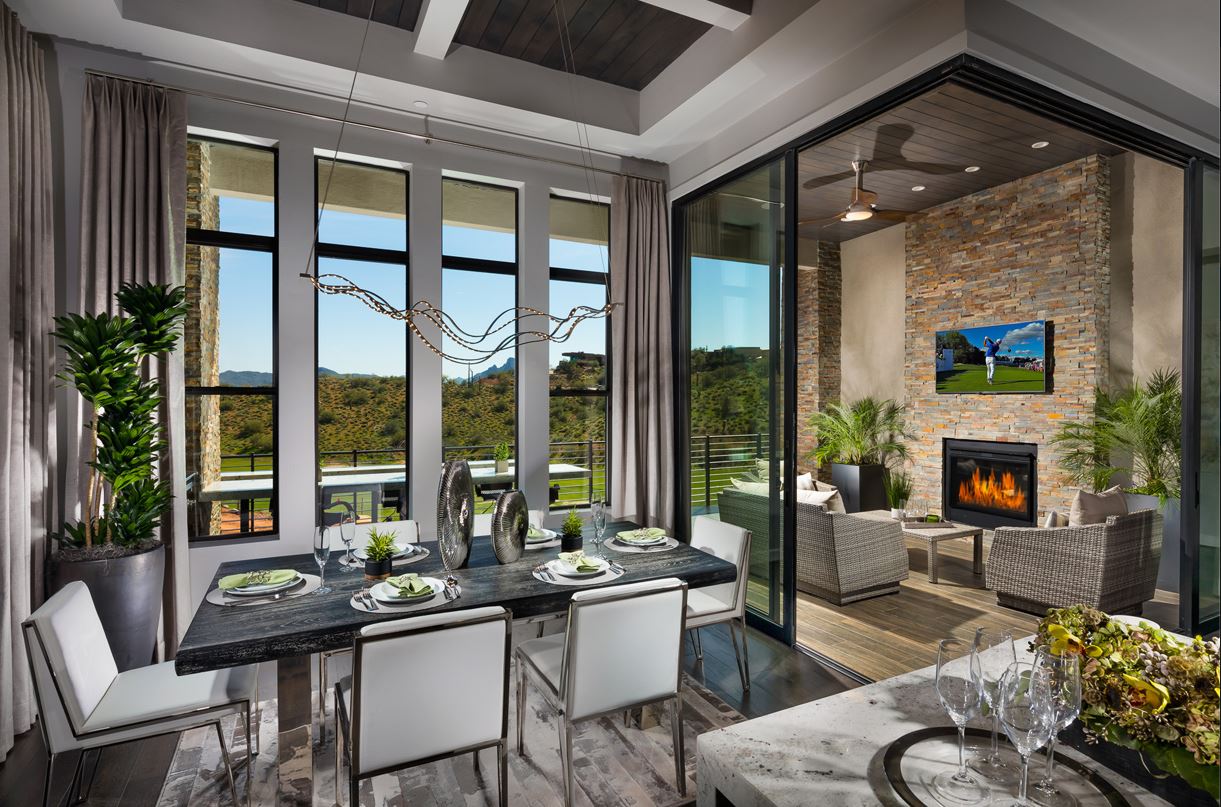Function, beauty and economy — most would agree that those are the three basic pillars of home design. Sacrifice one and the home is, at best, not as pleasant or efficient as it might be for its residents. It may be common in terms of aesthetics, or lacking in style; rooms may be awkwardly placed, too small or too large, have inadequate storage or lack other functional and desirable attributes. Finally, if costs soar out of control, the home becomes a burden for buyers, and might become a losing proposition for the builder.

Living Large — A Unique Concept
David Weekley, an exemplary builder, calls it LifeDesign, and the nationwide company focuses on four areas that influence the way a home lives: Sight Lines, Traffic Patterns, Room Placement, and Windows and Light.
Here at Aterra, of course, we couldn’t agree more that well-designed homes brightened by views, natural light and air, and comprehensive, effective interior lighting plans will live up to their full potential as attractive, comfortable, nurturing family spaces.
But we go far beyond lighting to assure that homebuyers today will have electrical options for future technology. Dedicated device charging stations are commonplace today; but what about car-charging stations, integrated sound controls, motion-activated lighting for both interior and exterior safety, and sensing devices that will eliminate the need for manual yard watering settings, automated blind and drapery controls and hands-off temperature adjustments?
Tech advancements may — sooner than you think — eliminate the need for entry door locks and bulky, rail-mounted garage door openers. You might never again have to actually plug an appliance into a visible outlet, and “remotes” could become relics of the past, replaced instead by smart technology apps tied to personal devices or an integrated home hub.
As Americans look forward to living longer and healthier lives, many also expect to remain in their homes longer, prompting a new look at the ideas of “aging in place” and universal design. Electrical design affects myriad areas of home design; it is important to consider future needs as you discuss your new homes needs and wants.
Adopt an Integrated Approach
As a new home buyer, you will want to personalize your home to your needs and preferences as much as possible; not only in terms of budget and design, but by the size and configuration of rooms, through the materials and colors you select, and with the perks and amenities you insist upon.
With expertise that extends beyond the bounds of ambient and task lighting, Aterra partners with area builders and contractors, architects, designers and home buyers to create functional, beautiful, cost-effective homes. We all recognize that there are multiple components in play.
Much of future technology may still be in concept development, but concepts such as handle-less faucets are now mainstream, and building materials that can “heal” themselves are currently beyond the “dream” stage. Likewise, home security and entertainment systems are today’s “hot ticket” items, but home automation of the future will almost certainly impact many more areas of daily life. The good news is that, by planning now for expected tech developments, your home will serve you better in the short term, and be ready for a future that is still only a dream.
Let us help you create a home with outstanding form and function, appropriate style and quality, lasting value and durability. It is no easy task. But, when all the components are balanced, a home does, indeed, become a thing of beauty, a veritable castle.


